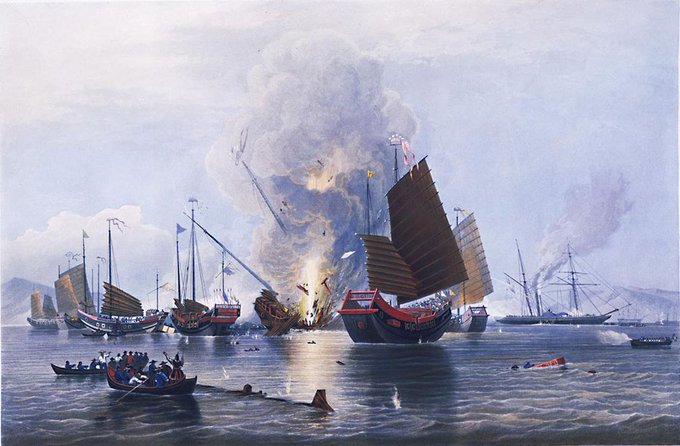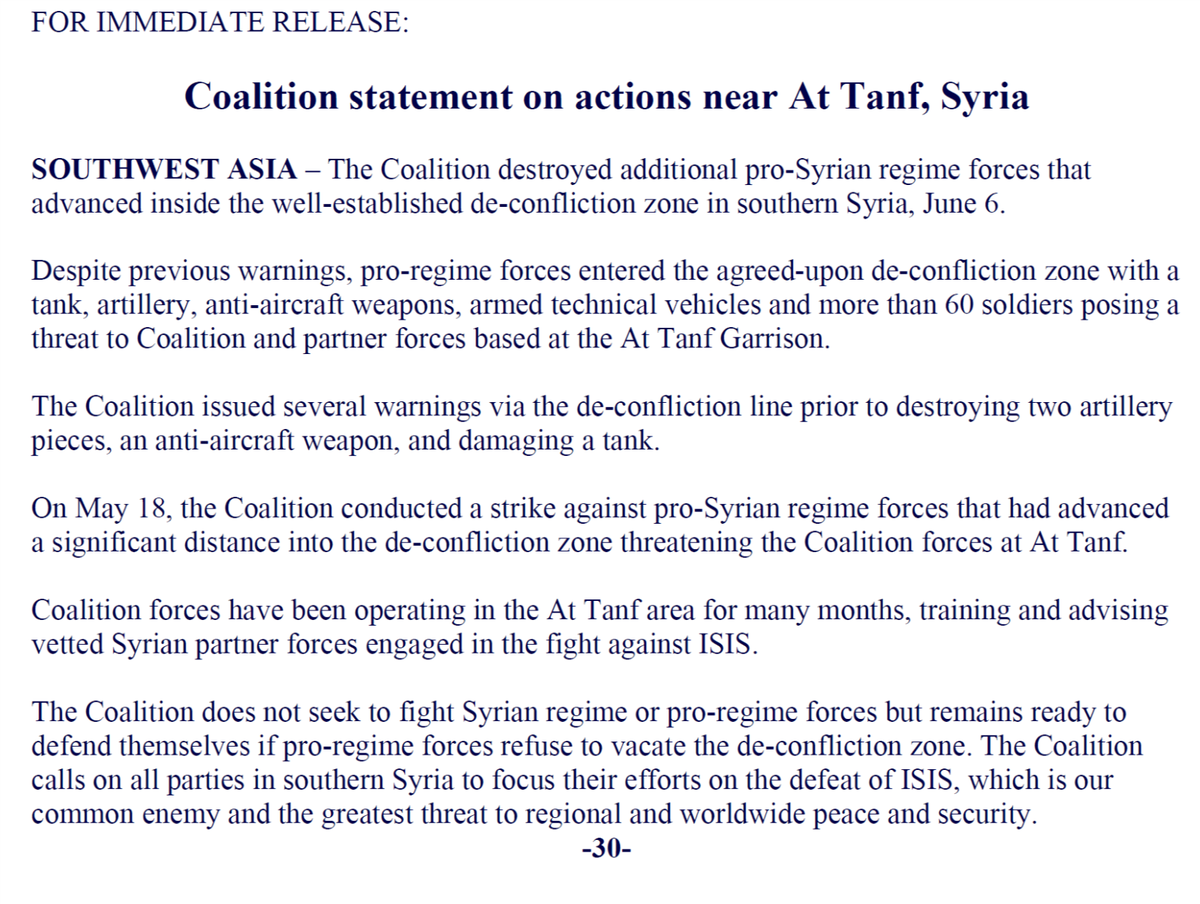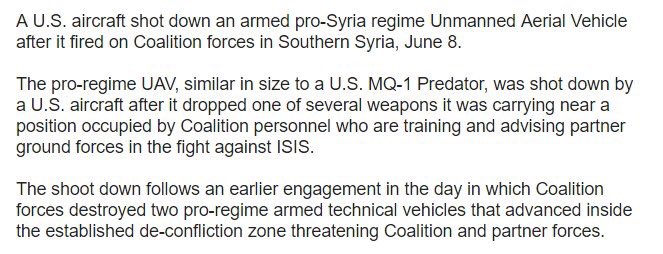(271) 05-13-2017-to-05-19-2017_____****THE****WINDS****of****WAR****
http://www.timebomb2000.com/vb/show...19-2017_____****THE****WINDS****of****WAR****
(272) 05-20-2017-to-05-26-2017_____****THE****WINDS****of****WAR****
http://www.timebomb2000.com/vb/show...26-2017_____****THE****WINDS****of****WAR****
(273) 05-27-2017-to-06-02-2017_____****THE****WINDS****of****WAR****
http://www.timebomb2000.com/vb/show...02-2017_____****THE****WINDS****of****WAR****
-----
North Korea Main Thread - All things Korea June 3rd - June 9th
http://www.timebomb2000.com/vb/show...ain-Thread-All-things-Korea-June-3rd-June-9th
The United States and NATO Are Preparing for a Major War With Russia
Started by*rmomaha,*Today*12:57 AM
http://www.timebomb2000.com/vb/show...ATO-Are-Preparing-for-a-Major-War-With-Russia
Europe: Politics, Trade, NATO. June 2017
Started by*northern watch,*Yesterday*09:34 PM
http://www.timebomb2000.com/vb/showthread.php?518218-Europe-Politics-Trade-NATO.-June-2017
Europe: Politics, Trade, NATO June 2017
Started by*Plain Jane,*05-31-2017*01:54 PM
http://www.timebomb2000.com/vb/showthread.php?518079-Europe-Politics-Trade-NATO-June-2017
Putin Has Had Enough of the Blame Game - "Isn' There a Pill They Can Give You?" (to Megyn)
Started by*Seeker,*Yesterday*10:24 AM
http://www.timebomb2000.com/vb/show...There-a-Pill-They-Can-Give-You-quot-(to-Megyn)
China’s next step to destroy the dollar
Started by*Sam2,*Yesterday*07:40 PM
http://www.timebomb2000.com/vb/showthread.php?518212-China’s-next-step-to-destroy-the-dollar
Media Blackout as US Senators Meet in Secret with Global Elite Only Miles from White House
Started by*Sam2,*Yesterday*07:48 PM
http://www.timebomb2000.com/vb/show...with-Global-Elite-Only-Miles-from-White-House
ISIS 2017 threats, rumors and attacks, etc.
Started by*Lilbitsnana,*05-31-2017*10:38 AM
http://www.timebomb2000.com/vb/showthread.php?518067-ISIS-2017-threats-rumors-and-attacks-etc.
The Four Horsemen - 05/29 to 06/05
Started by*Ragnarok,*05-29-2017*04:21 PM
http://www.timebomb2000.com/vb/showthread.php?517972-The-Four-Horsemen-05-29-to-06-05
Two arrested after suspected explosive devices seized in inner city [Dublin, Ireland]
Started by*Melodi,*Yesterday*01:17 PM
http://www.timebomb2000.com/vb/show...e-devices-seized-in-inner-city-Dublin-Ireland
Zapad-17 Causing Concern In The Baltics
Started by*skip1,*02-20-2017*10:29 PM
http://www.timebomb2000.com/vb/showthread.php?512417-Zapad-17-Causing-Concern-In-The-Baltics
Resorts World Manila: Explosions, gunfire reported in Philippines
Started by*Shacknasty Shagrat,*06-01-2017*11:04 AM
http://www.timebomb2000.com/vb/show...la-Explosions-gunfire-reported-in-Philippines
UK, reported explosion, gunfire at Ariana Grande show at Manchester Arena
http://www.timebomb2000.com/vb/show...Ariana-Grande-show-at-Manchester-Arena/page14
Israel preparing a plan for partial evacuation in case of conflict with Lebanon
Started by*Lilbitsnana,*05-28-2017*09:59 PM
http://www.timebomb2000.com/vb/show...l-evacuation-in-case-of-conflict-with-Lebanon
Main Russia/Ukraine invasion thread - 8/11/16 Ukraine Military On "Combat" Alert
http://www.timebomb2000.com/vb/show...ne-Military-On-quot-Combat-quot-Alert/page467
-----
For links see article source.....
Posted for fair use.....
http://www.reuters.com/article/us-asia-security-idUSKBN18U015
World News | Sat Jun 3, 2017 | 3:37am EDT
Mattis praises China's efforts on North Korea, dials up pressure on South China Sea
By Idrees Ali and Lee Chyen Yee | SINGAPORE
The United States is encouraged by China's efforts to restrain North Korea but Washington will not accept Beijing's militarization of islands in the South China Sea, U.S. Defense Secretary Jim Mattis said on Saturday.
The comments by Mattis, during the annual Shangri-La Dialogue, show how U.S. President Donald Trump's administration is looking to balance working with China to restrain North Korea's advancing missile and nuclear programs while dealing with Beijing's activities in the South China Sea.
U.S. allies have been worried by Trump's actively courting Chinese President Xi Jinping to restrain North Korea, fearing Washington might allow China a more free rein elsewhere in the region.
Some allies have also expressed concern that Washington's withdrawal from the Trans-Pacific trade partnership and the Paris global climate accord signals the United States is diluting its global leadership role.
Speaking at the dialogue, Asia's premier security forum, Mattis said the United States remained fully engaged with its partners.
"Like it or not, we are a part of the world," he said. "What a crummy world if we all retreat inside our borders."
Nevertheless, reversing or slowing North Korea's nuclear and missile programs has become a security priority for Washington, given Pyongyang's vow to develop a nuclear-tipped missile capable of hitting the U.S. mainland.
The Trump administration has been pressing China aggressively to rein in its reclusive neighbor, warning all options are on the table if North Korea persists with its weapons programs.
"The Trump administration is encouraged by China's renewed commitment to work with the international community toward denuclearization," Mattis said.
"Ultimately, we believe China will come to recognize North Korea as a strategic liability, not an asset."
However, Mattis said seeking China's cooperation on North Korea did not mean Washington would not challenge Beijing's activities in the South China Sea.
The U.N. Security Council on Friday expanded targeted sanctions against North Korea after its repeated missile tests, adopting the first such resolution agreed by the United States and China since Trump took office.
In another sign of increased pressure on North Korea, Japan's navy and air force began a three-day military exercise with two U.S. aircraft carriers in the Sea of Japan on Thursday.
Japanese Defense Minister Tomomi Inada, speaking at the Singapore forum, said Tokyo backed the United States using any option to deal with North Korea, including military strikes, and was seeking a deeper alliance with Washington.
But she also said she was concerned about the situation in the South China Sea and in the East China Sea.
China's claims in the South China Sea, through which about $5 trillion in ship-borne trade passes each year, are contested by Brunei, Malaysia, the Philippines, Taiwan and Vietnam. China and Japan both claim islands in the East China Sea.
LOW-KEY
China, which sent only a low-key delegation to the forum, said its ties with the United States were vital for the region.
"I believe that if China and the United States can ensure no conflict, as well as maintain mutual respect, cooperation and trust, it will contribute greatly to security in the Asia Pacific and the world," Lt Gen He Lei, the head of Beijing's delegation, told reporters.
Related Coverage
Japan defense minister backs all U.S. options on North Korea, seeks deeper alliance
Allies around the world have been concerned about the commitment of the United States since Trump took office on Jan. 20 because of his "America First" rhetoric and expectations that he would concentrate on a domestic agenda.
Mattis sought to ease concerns for allies in the Asia-Pacific, saying the region was a priority and the primary effort was alliance building. He added, however, that countries must "contribute sufficiently to their own security."
In a sign of the U.S. commitment to the region, Mattis said that soon about 60 percent of overseas tactical aviation assets would be assigned to the region and he would work with the U.S. Congress on an Asia-Pacific stability initiative.
Mattis said the United States welcomed China's economic development, but he anticipated "friction" between the two countries.
"While competition between the U.S. and China, the world's two largest economies, is bound to occur, conflict is not inevitable," Mattis said.
While eager to work with China in dealing with North Korea, Mattis said the United States did not accept China placing weapons and other military assets on man-made islands in the South China Sea.
"We oppose countries militarizing artificial islands and enforcing excessive maritime claims," Mattis said. "We cannot and will not accept unilateral, coercive changes to the status quo."
Without giving details, Mattis also said the United States would take further steps to protect the U.S. homeland.
Earlier this week, the United States carried out a successful, first-ever missile defense test involving a simulated attack by an intercontinental ballistic missile, in a major milestone for a program meant to defend against a mounting North Korean threat.
(Additional reporting by Masayuki Kitano and Greg Torode; Editing by Raju Gopalakrishnan and Lincoln Feast)
http://www.timebomb2000.com/vb/show...19-2017_____****THE****WINDS****of****WAR****
(272) 05-20-2017-to-05-26-2017_____****THE****WINDS****of****WAR****
http://www.timebomb2000.com/vb/show...26-2017_____****THE****WINDS****of****WAR****
(273) 05-27-2017-to-06-02-2017_____****THE****WINDS****of****WAR****
http://www.timebomb2000.com/vb/show...02-2017_____****THE****WINDS****of****WAR****
-----
North Korea Main Thread - All things Korea June 3rd - June 9th
http://www.timebomb2000.com/vb/show...ain-Thread-All-things-Korea-June-3rd-June-9th
The United States and NATO Are Preparing for a Major War With Russia
Started by*rmomaha,*Today*12:57 AM
http://www.timebomb2000.com/vb/show...ATO-Are-Preparing-for-a-Major-War-With-Russia
Europe: Politics, Trade, NATO. June 2017
Started by*northern watch,*Yesterday*09:34 PM
http://www.timebomb2000.com/vb/showthread.php?518218-Europe-Politics-Trade-NATO.-June-2017
Europe: Politics, Trade, NATO June 2017
Started by*Plain Jane,*05-31-2017*01:54 PM
http://www.timebomb2000.com/vb/showthread.php?518079-Europe-Politics-Trade-NATO-June-2017
Putin Has Had Enough of the Blame Game - "Isn' There a Pill They Can Give You?" (to Megyn)
Started by*Seeker,*Yesterday*10:24 AM
http://www.timebomb2000.com/vb/show...There-a-Pill-They-Can-Give-You-quot-(to-Megyn)
China’s next step to destroy the dollar
Started by*Sam2,*Yesterday*07:40 PM
http://www.timebomb2000.com/vb/showthread.php?518212-China’s-next-step-to-destroy-the-dollar
Media Blackout as US Senators Meet in Secret with Global Elite Only Miles from White House
Started by*Sam2,*Yesterday*07:48 PM
http://www.timebomb2000.com/vb/show...with-Global-Elite-Only-Miles-from-White-House
ISIS 2017 threats, rumors and attacks, etc.
Started by*Lilbitsnana,*05-31-2017*10:38 AM
http://www.timebomb2000.com/vb/showthread.php?518067-ISIS-2017-threats-rumors-and-attacks-etc.
The Four Horsemen - 05/29 to 06/05
Started by*Ragnarok,*05-29-2017*04:21 PM
http://www.timebomb2000.com/vb/showthread.php?517972-The-Four-Horsemen-05-29-to-06-05
Two arrested after suspected explosive devices seized in inner city [Dublin, Ireland]
Started by*Melodi,*Yesterday*01:17 PM
http://www.timebomb2000.com/vb/show...e-devices-seized-in-inner-city-Dublin-Ireland
Zapad-17 Causing Concern In The Baltics
Started by*skip1,*02-20-2017*10:29 PM
http://www.timebomb2000.com/vb/showthread.php?512417-Zapad-17-Causing-Concern-In-The-Baltics
Resorts World Manila: Explosions, gunfire reported in Philippines
Started by*Shacknasty Shagrat,*06-01-2017*11:04 AM
http://www.timebomb2000.com/vb/show...la-Explosions-gunfire-reported-in-Philippines
UK, reported explosion, gunfire at Ariana Grande show at Manchester Arena
http://www.timebomb2000.com/vb/show...Ariana-Grande-show-at-Manchester-Arena/page14
Israel preparing a plan for partial evacuation in case of conflict with Lebanon
Started by*Lilbitsnana,*05-28-2017*09:59 PM
http://www.timebomb2000.com/vb/show...l-evacuation-in-case-of-conflict-with-Lebanon
Main Russia/Ukraine invasion thread - 8/11/16 Ukraine Military On "Combat" Alert
http://www.timebomb2000.com/vb/show...ne-Military-On-quot-Combat-quot-Alert/page467
-----
For links see article source.....
Posted for fair use.....
http://www.reuters.com/article/us-asia-security-idUSKBN18U015
World News | Sat Jun 3, 2017 | 3:37am EDT
Mattis praises China's efforts on North Korea, dials up pressure on South China Sea
By Idrees Ali and Lee Chyen Yee | SINGAPORE
The United States is encouraged by China's efforts to restrain North Korea but Washington will not accept Beijing's militarization of islands in the South China Sea, U.S. Defense Secretary Jim Mattis said on Saturday.
The comments by Mattis, during the annual Shangri-La Dialogue, show how U.S. President Donald Trump's administration is looking to balance working with China to restrain North Korea's advancing missile and nuclear programs while dealing with Beijing's activities in the South China Sea.
U.S. allies have been worried by Trump's actively courting Chinese President Xi Jinping to restrain North Korea, fearing Washington might allow China a more free rein elsewhere in the region.
Some allies have also expressed concern that Washington's withdrawal from the Trans-Pacific trade partnership and the Paris global climate accord signals the United States is diluting its global leadership role.
Speaking at the dialogue, Asia's premier security forum, Mattis said the United States remained fully engaged with its partners.
"Like it or not, we are a part of the world," he said. "What a crummy world if we all retreat inside our borders."
Nevertheless, reversing or slowing North Korea's nuclear and missile programs has become a security priority for Washington, given Pyongyang's vow to develop a nuclear-tipped missile capable of hitting the U.S. mainland.
The Trump administration has been pressing China aggressively to rein in its reclusive neighbor, warning all options are on the table if North Korea persists with its weapons programs.
"The Trump administration is encouraged by China's renewed commitment to work with the international community toward denuclearization," Mattis said.
"Ultimately, we believe China will come to recognize North Korea as a strategic liability, not an asset."
However, Mattis said seeking China's cooperation on North Korea did not mean Washington would not challenge Beijing's activities in the South China Sea.
The U.N. Security Council on Friday expanded targeted sanctions against North Korea after its repeated missile tests, adopting the first such resolution agreed by the United States and China since Trump took office.
In another sign of increased pressure on North Korea, Japan's navy and air force began a three-day military exercise with two U.S. aircraft carriers in the Sea of Japan on Thursday.
Japanese Defense Minister Tomomi Inada, speaking at the Singapore forum, said Tokyo backed the United States using any option to deal with North Korea, including military strikes, and was seeking a deeper alliance with Washington.
But she also said she was concerned about the situation in the South China Sea and in the East China Sea.
China's claims in the South China Sea, through which about $5 trillion in ship-borne trade passes each year, are contested by Brunei, Malaysia, the Philippines, Taiwan and Vietnam. China and Japan both claim islands in the East China Sea.
LOW-KEY
China, which sent only a low-key delegation to the forum, said its ties with the United States were vital for the region.
"I believe that if China and the United States can ensure no conflict, as well as maintain mutual respect, cooperation and trust, it will contribute greatly to security in the Asia Pacific and the world," Lt Gen He Lei, the head of Beijing's delegation, told reporters.
Related Coverage
Japan defense minister backs all U.S. options on North Korea, seeks deeper alliance
Allies around the world have been concerned about the commitment of the United States since Trump took office on Jan. 20 because of his "America First" rhetoric and expectations that he would concentrate on a domestic agenda.
Mattis sought to ease concerns for allies in the Asia-Pacific, saying the region was a priority and the primary effort was alliance building. He added, however, that countries must "contribute sufficiently to their own security."
In a sign of the U.S. commitment to the region, Mattis said that soon about 60 percent of overseas tactical aviation assets would be assigned to the region and he would work with the U.S. Congress on an Asia-Pacific stability initiative.
Mattis said the United States welcomed China's economic development, but he anticipated "friction" between the two countries.
"While competition between the U.S. and China, the world's two largest economies, is bound to occur, conflict is not inevitable," Mattis said.
While eager to work with China in dealing with North Korea, Mattis said the United States did not accept China placing weapons and other military assets on man-made islands in the South China Sea.
"We oppose countries militarizing artificial islands and enforcing excessive maritime claims," Mattis said. "We cannot and will not accept unilateral, coercive changes to the status quo."
Without giving details, Mattis also said the United States would take further steps to protect the U.S. homeland.
Earlier this week, the United States carried out a successful, first-ever missile defense test involving a simulated attack by an intercontinental ballistic missile, in a major milestone for a program meant to defend against a mounting North Korean threat.
(Additional reporting by Masayuki Kitano and Greg Torode; Editing by Raju Gopalakrishnan and Lincoln Feast)
Last edited:










